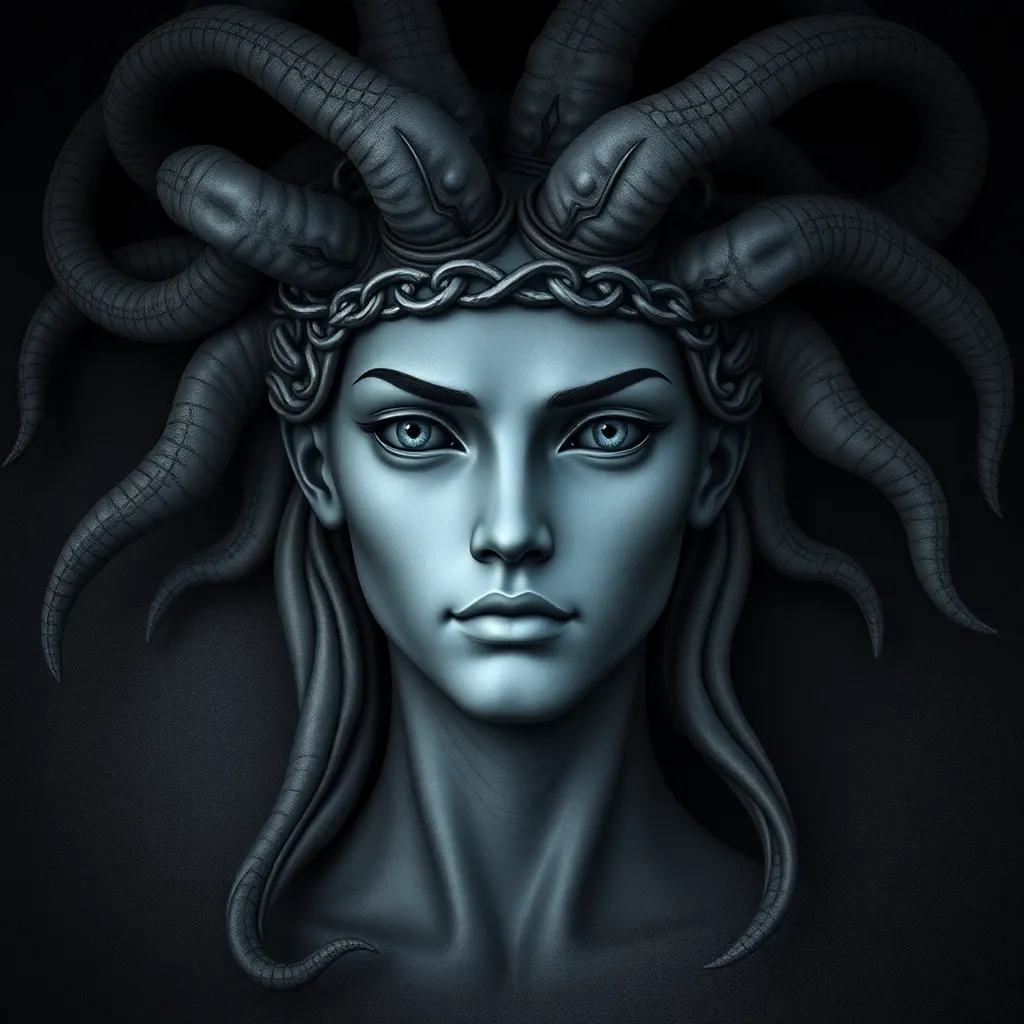Medusa and the Power of the Gaze: The Concept of Staring in Myth
I. Introduction
Medusa, one of the most iconic figures in Greek mythology, is often remembered for her serpent hair and the ability to turn onlookers into stone. But beyond her fearsome appearance, Medusa’s myth speaks to deeper themes of power, fear, and transformation. The concept of the gaze—how we look at others and how they look back—plays a critical role in understanding Medusa’s narrative and its implications within the broader context of mythology.
This article will explore the significance of Medusa’s myth, the symbolism of her gaze, and how these elements resonate with contemporary themes, particularly regarding gender and power dynamics. Through this exploration, we aim to uncover the layers of meaning behind Medusa’s gaze and its enduring legacy in art and culture.
II. The Myth of Medusa: Origins and Evolution
Medusa was originally one of the three Gorgon sisters, daughters of Phorcys and Ceto, ancient sea deities. Unlike her sisters, Stheno and Euryale, who were immortal, Medusa was mortal and known for her beauty. She served as a priestess in Athena’s temple, where her beauty drew admiration and envy. However, Medusa’s fate took a tragic turn when she was cursed by Athena for being violated by Poseidon within the sacred temple.
This transformation from a beautiful maiden into a monstrous creature is central to her story. Medusa’s hair became a nest of serpents, and her gaze could petrify anyone who looked directly at her. Over time, various adaptations of her myth have emerged, depicting her not just as a monster but as a tragic figure, evoking sympathy and understanding for her plight.
III. The Symbolism of the Gaze
The concept of the gaze in mythology refers to the power dynamics inherent in how characters observe and are observed. In Medusa’s case, her gaze symbolizes both power and vulnerability. The gaze can dictate relationships, establishing dominance or fear.
- Power Dynamics: The ability to gaze upon someone gives a sense of control, while being gazed at often implies submission or vulnerability.
- Beauty and Monstrosity: Medusa embodies the duality of the gaze; her beauty transformed into monstrosity challenges the traditional notions of femininity and desirability.
IV. Medusa’s Gaze: A Weapon and a Curse
Medusa’s gaze serves as both a weapon and a curse. Her ability to turn onlookers into stone highlights the terrifying power she possesses. This petrifying effect is not merely a physical transformation; it symbolizes the power of fear and the consequences of desire.
However, this power also isolates Medusa. Shunned and feared, she is forced to live away from society, illustrating how her gift becomes a curse. This isolation reflects the broader societal implications of how women’s power is often both revered and feared, leading to their ostracism.
V. The Gaze in Other Mythological Contexts
Medusa’s gaze is not unique in mythology. Many figures possess powerful gazes that influence others, such as the Cyclops and the Sirens. These characters share common themes of seduction, danger, and transformation:
- Cyclops: The Cyclopes, with their single eye, symbolize brute strength and the fear of the unknown, using their gaze to intimidate.
- Sirens: The Sirens’ beautiful songs and alluring appearances draw sailors to their doom, highlighting the seductive and deadly nature of their gaze.
In these narratives, the gaze often establishes authority and incites fear, emphasizing the complexities of observation in mythological storytelling.
VI. Feminist Interpretations of Medusa’s Gaze
In contemporary discourse, Medusa has been reinterpreted as a symbol of female rage and empowerment. Feminist scholars argue that her story reflects societal fears surrounding powerful women:
- Female Rage: Medusa’s transformation can be seen as a response to the violence she experienced, embodying a form of rage against male domination.
- Societal Fears: The fear of Medusa’s gaze reflects broader societal anxieties about women who assert their power and challenge patriarchal norms.
By reclaiming Medusa’s narrative, contemporary interpretations highlight her as a figure of resilience and strength, challenging the traditional villain archetype imposed upon her.
VII. The Legacy of Medusa in Art and Culture
Medusa’s legacy extends far beyond ancient mythology, impacting various forms of art and literature throughout history. Artists and writers have represented Medusa in diverse ways, often reflecting societal attitudes towards femininity and power:
- Visual Arts: From ancient pottery to Renaissance paintings, Medusa’s image has been used to explore themes of beauty and horror.
- Literature: In modern literature, Medusa appears as a complex character, often symbolizing the struggles of women against oppression.
- Film: Movies and media frequently depict Medusa, often reinterpreting her story to reflect contemporary issues surrounding gender and power.
Medusa continues to be a powerful cultural icon, representing the intersection of beauty, monstrosity, and female empowerment in the modern imagination.
VIII. Conclusion
In summary, Medusa’s myth offers rich insights into the themes of the gaze, power dynamics, and gender relations. From her origins as a beautiful maiden to her transformation into a feared monster, Medusa’s story reflects the complexities of human perception and societal fears.
The enduring power of the gaze in mythology encourages us to examine our own perspectives and the implications of how we look at others. As we continue to engage with myths like Medusa’s, we gain valuable insights into contemporary issues, reminding us of the relevance of these ancient stories in understanding modern society.




